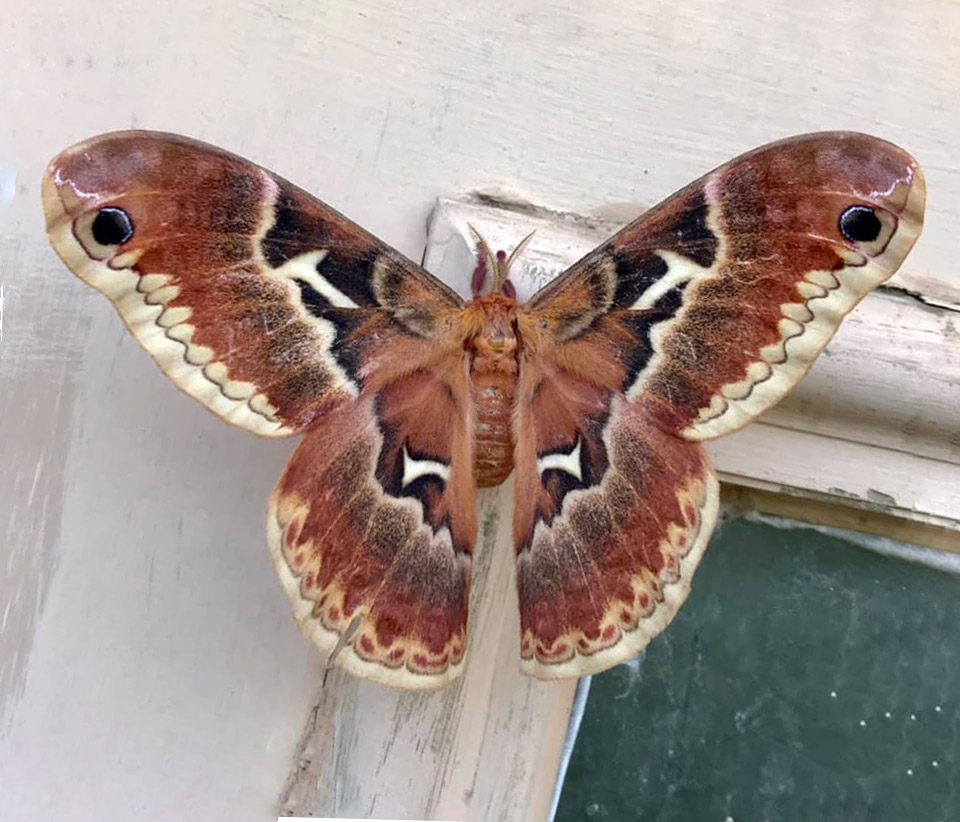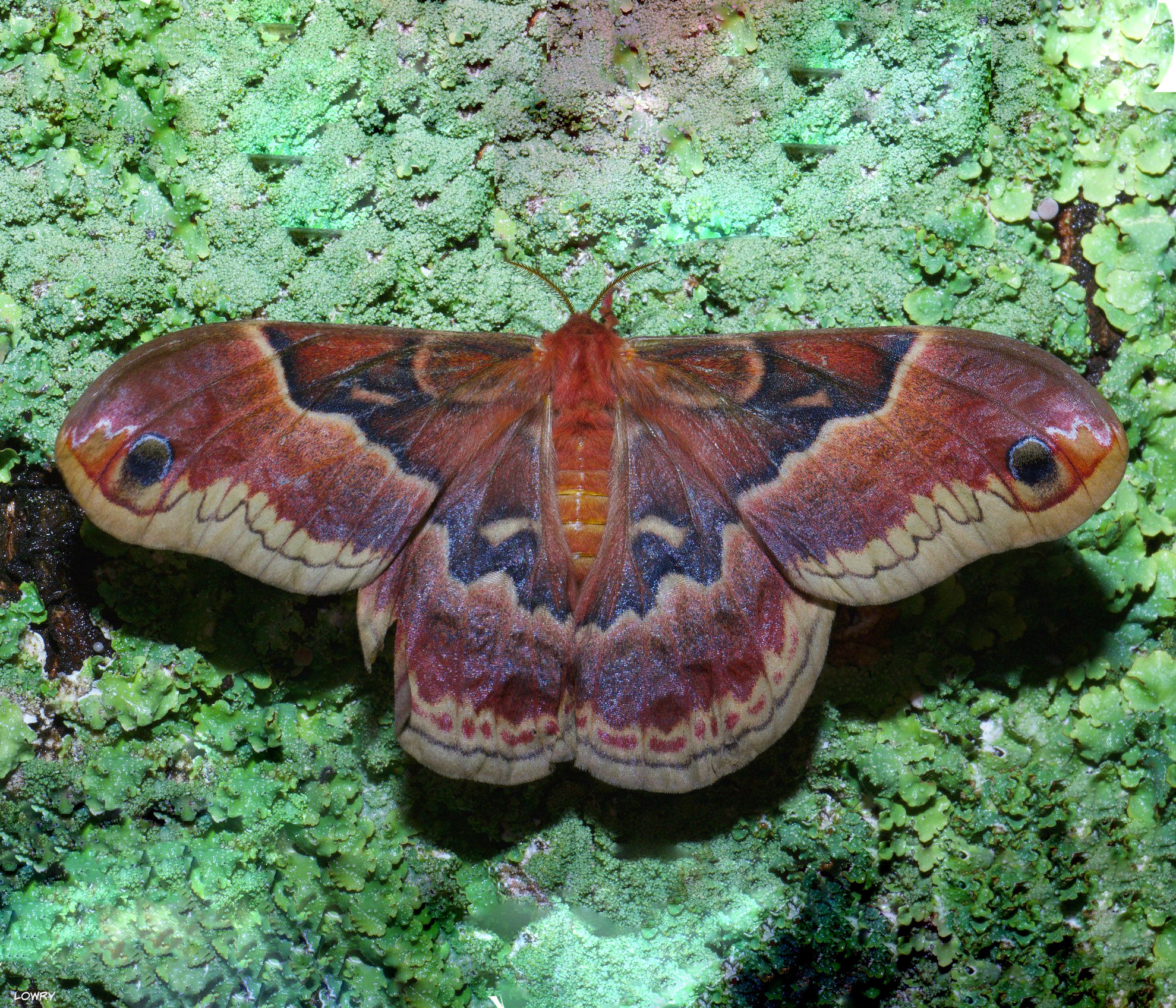ECOLOGY ▪ EDUCATION ▪ ADVOCACY


Callosamia: Callo in Latin means “beautiful,” and in Greek mythology, Samia was a freshwater nymph and the daughter of the river god Maeander.
Cal-oh-sam-eye-uh
is a small genus of silkworm moths in the family Saturniidae that are endemic to North America.
| Distribution of Genus Callosamia | ||||
| Taxonomic Level | Worldwide | North America | Midwestern USA | Indiana |
|---|---|---|---|---|
| Species | 3 | 3a | 2 | 2 |
a In North America, aside from the two species listed on this page, a third species of Callosamia (C. securifera) is native to the Southeastern United States.
Callosamia promethea, described in 1773 by Dru Drury as Phalaena promethea
Submitted by Rick Malad

Like all silkworm moths, members of the genus Callosamia are sexually dimorphic, and the males of each species are quite easily distinguished by color. Except for the tan outer margins, male promethea silkmoths (Callosamia promethea) are usually almost entirely black. Male tulip-tree silkmoths (Callosamia angulifera) look quite like their female counterparts, except darker and without yellow or orange tint. Considering the overlap in characteristics within the two species, the females are often not distinguishable by eye or photographs alone. Here, however, are the keys to separation with specimens at the extremes:
Size: The wingspan of the tulip-tree silkmoth adults (up to 110 mm) are generally larger than those of the promethea moth (up to 95 mm), but only by a practically tiny amount. Even to the trained eye, the difference is hard to detect. If one had a ruler and two very relaxed individuals side by side, the size would still not be a dependable metric for differentiation, as wingspan sizes overlap considerably. However, when taking into consideration the other key characteristics, it may help in determining species.
Color: Tulip-tree silkmoth females are usually described as mostly brown with hints of yellow or orange, whereas Promethea females have more of a red tint. Here also is some disparity. Both species, depending on lighting and the observer, may appear to contain coloration of the other. However, at the extremes, tulip-tree silkmoth is almost flat brown, while promethea silkmoth can be a pretty vibrant red.
Discal Spots: Usually, the best distinguishing features are the discal spots, or white “chevrons,” on the forewings. On the promethea silkmoth, they are either considerably smaller than those of tulip-tree silkmoth or often absent altogether (especially in males). Once again, however, females of either species may have discal spots resembling those of the other.
Summary: Generally speaking, one of these characteristics is not enough to determine the species of an individual, but in conjunction with one another, they are somewhat reliable. Bear in mind that there will almost certainly always be misidentifications of these species, even by experts, based on physical traits alone.
The map, graph, and data below represent the Indiana sightings of the genus Callosamia. All sightings were confirmed through photographic evidence by individuals who contributed to the Great American IN Nature Lepidoptera Project (GAIN LP). All data is current as of 01 April 2025.
Counties recorded:
52 of 92
Top counties/#of records:
Monroe: 33
Brown: 32
Washington: 25
Scott: 20
Hamilton: 19
Owen: 16
Porter: 15
 GAIN LP documented in county
GAIN LP documented in county
Callosamia angulifera courtesy Rick Malad. Callosamia promethea female courtesy of Carla Frazier, and male courtesy Brian Lowry.